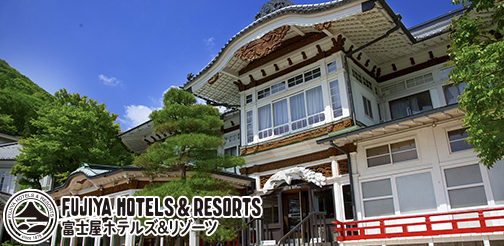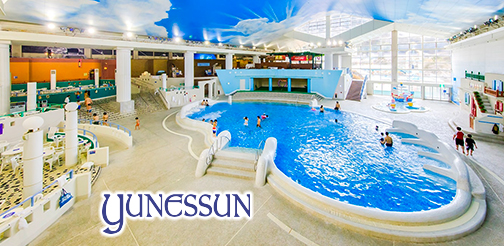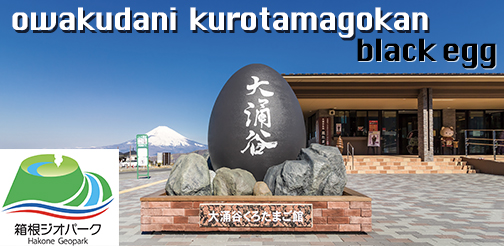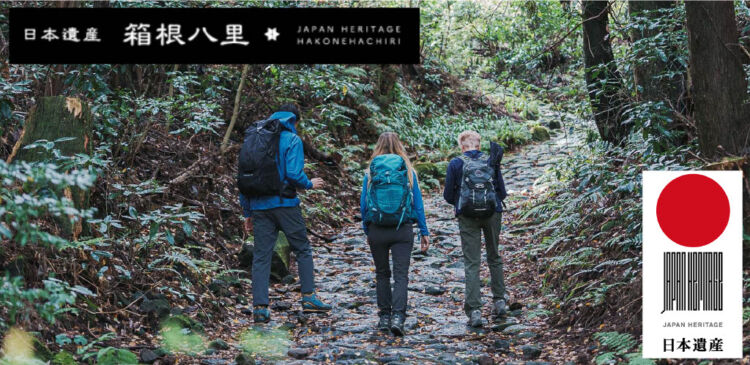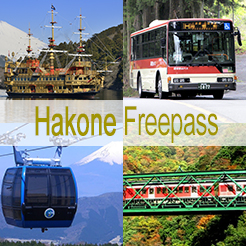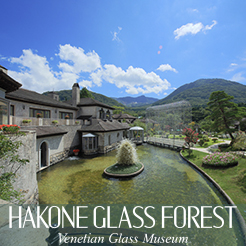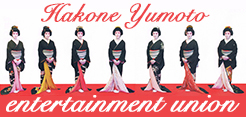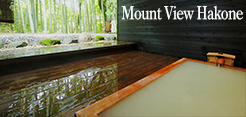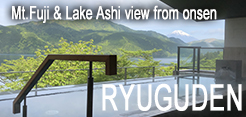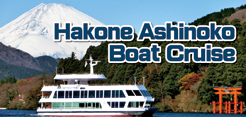Experience a Ryokan, the famed Japanese Inn
The Mikawaya Ryokan
The ryokan are traditional Japanese inns that have honed the art of Japanese hospitality called “omotenashi.” The Hakone area has many ryokan, both and some dating back centuries.
Any trip to Japan should include a stay at a traditional Japanese ryokan. Ryokan are inns that have catered to travellers for centuries while perfecting the art of hospitality. There are many modern inns to choose from, but the Hakone area is particularly famous for the many inns whose histories can be traced back hundreds of years. Many of these buildings are registered as important cultural properties to the Japanese and can transport you back to a different time and let you experience a different side of Japan. Some of the most historic places include Ichinoyu Honkan, Fukuzumiro, Gora Kansuiro, Mikawaya and Kansuiro. Modern ryokan are also special places to experience; Kinnotake Tonosawa, Ryuguden, Yaekan, and many more.
Soak in an Onsen, the Japanese Hot Spring
Onsen at Ichiitei
Hakone is considered an “Onsen Theme Park” because of the variety of hot springs that are located throughout the area because of the unique geological history and structure of the area.
The onsen is a part of Japanese history, geology, and culture. There are paintings and stories about the use and discovery of onsen that date back thousands of years in Japan. As a part of the culture, it was important to stay clean for physical and spiritual health. A modern trip to natural hot springs are meant to relax and invigorate you. Many hot springs in Hakone have wonderful settings, designs, and sometimes views of nature. The properties of the water can also change depending on location, from the milky waters of Sengokuhara to the skin smoothing alkaline waters of Yumoto. There are many places and types to explore and discover. Enjoying an onsen in Japan is a special experience and for those a bit shy, many places have private onsen available for personal use as well.
Owakudani Valley
Owakudani is a place where you can feel volcanic activity up close, with fumes rising from the desolate mountain surface.
If you come to Hakone, this is the place to go. Owakudani was formed about 3,000 years ago at the site of the eruption crater of Mount Kamiyama, a volcano in Hakone, and even today you can see white fumes smelling of hydrogen sulfide rising from here and there. Those with respiratory problems or heart problems should be careful when visiting. The famous gourmet food is the “black egg,” which is said to extend your life by seven years if you eat one. The boiled egg with a black shell made from the heat of the hot spring is famous as a souvenir.
It is also famous as a souvenir. The ropeway leading to Owakudani offers a spectacular view from the car window.
Enjoy the Gifts of Nature
Fun even on a rainy day! Hakone Kowakien Yunessun, a hot spring amusement park, using natural hot spring water from the Hakone mountains.
Hakone Kowakien Yunessun is the best amusement park in Hakone. The park features a variety of amusing baths, including not only a full-fledged outdoor hot spring bath, but also unusual baths such as Rodeo Mountain, Cave Bath, and Dragon Waterside, as well as foot baths with doctor fish, wine baths, and authentic coffee baths. This hot spring theme park requires bathing suits so no need to be shy. The restaurant there can also be used without entering the facility, so it is recommended to go there to enjoy gourmet specialties of the Hakone area, such as robatayaki using Odawara ingredients and hamburgers with homemade buns.
In addition to onsen, there are many hiking trails and other outdoor activities to enjoy in the area.
Visit Historic Locations
Fujiya Hotel, with its impressive classical interior and exterior to one of Japan`s most historic hotels.
The Fujiya Hotel was established in 1878 and has a classical atmosphere. The hotel was renovated in July 2020, and the retro atmosphere has been maintained, but the interior and exterior are now even more atmospheric. One of the features of this hotel is the customer service that has been passed down from generation to generation based on the company motto, “Sincerity. From the front desk to the restaurants and guest rooms, the hotel provides a comfortable atmosphere. The main dining room, “The Fujiya,” has an impressive ceiling with 636 alpine plants from the Japanese Alps painted on it. The classic French cuisine served in this symbolic restaurant of Fujiya Hotel is superb.
Other historic locations in the area include Onshi Park, the former summer villa of the imperial family, the Tokaido Road, Japan`s most famous road connecting Kyoto and Tokyo for centuries, and much more.
Sengokuhara Highlands
Don’t miss the golden fields of silver pampas grass at Sengokuhara during the fall
Sengokuhara Plateau has many attractions such as the silver grass meadow, Sengokuhara Marsh, and Hakone Wetland Flower Garden, and has been selected as one of the 50 most scenic spots in Kanagawa. The silver grass meadow at the foot of the plateau is famous for its beautiful scenery of swaying golden ears in autumn. Adjacent to the silver grass meadow is the Sengokuhara Marsh, a 17-hectare marsh designated as a national natural monument. The Hakone Glass Forest Museum and Pola Museum of Art are also nearby and should be visited as well. There are several restaurants in the vicinity, but the Yomogi-an (mugwort bean paste) soft-serve ice cream at the Yomogi-ya sweet shop is exceptional. It is an excellent sweet that you must try.
Outdoor Art
Sculptures are displayed in a nature-rich outdoor exhibition space at The Open-Air Museum.
The Open-Air Museum of Sculpture, which opened in 1969, is Japan’s first outdoor sculpture museum. The 70,000-square-meter garden, surrounded by greenery, displays about 120 works by famous Japanese and foreign artists, including Henry Moore. At the far end of the museum is the Picasso Pavilion, where 319 pieces of Picasso’s collection, including paintings, sculptures, and ceramics, are gradually being exhibited. There are also other hands-on artworks, such as the Net Forest, which can be enjoyed by visitors with small children. The “Symphony of Happiness Sculpture,” consisting of colorful stained glass and a spiral staircase in the center, is also very popular for its social media appeal. There are also cafes and restaurants on the premises, and it is recommended to stop by between visits. This is a museum that can be enjoyed by anyone, whether you are visiting with family or friends.
Hakone Ropeway and Views of Fuji
Hakone Ropeway, with views of Owakudani Valley and the surrounding Mountains connects you with the mountain village of Gora and Lake Ashi via Owakudani.
The Hakone Ropeway connects Togendai Station on the shores of Lake Ashinoko and Hayamiyama Station, the relay point for the Hakone Tozan Cable Car. There are many sightseeing spots not only around each station, but also at Owakudani and Ubako stations along the way, and you should definitely get off at each station to enjoy sightseeing. In particular, at Hayamozan Station, you will find more than 250 items, including sweets and original items from cu-mo Hakone, all of which are cute and sure to make a splash on social networking sites. In addition, the “Special Owakudani Curry” at Owakudani Station Shokudo on the second floor of Owakudani Station is an authentic spicy curry with a generous amount of minced meat from the foothills of Mount Hakone. Another reason for the popularity of the train is that you can see the majestic mountains of the surrounding Hakone Valley.
Lake Ashi
Ashinoko, a lakeside resort where you can spend a luxurious time exploring history, culture, and good food.
Lake Ashinoko is always mentioned as a tourist spot in Hakone. With its rich nature, spectacular view of Mount Fuji, and pirate ship cruises, you could spend a whole day here and still not have enough fun. The interior of the pirate ship is decorated in a chic style, with 3D art and other photo spots. The view of Hakone from the lake is exceptional. The view of Hakone from the lake is exceptional, especially during the fall foliage season, when the first snowfall of Mt. At the lakeside restaurant, you can enjoy Japanese or Italian cuisine while gazing at this magnificent view. It is truly a luxurious way to spend your time.
Around the south side of the lake are attractions such as Hakone Shrine, Onshi Park, Suginamiki, Narukawa Art Museum, and much more.
Mt. Komagatake
Komagatake, a famous peak that symbolizes Hakone, is also accessible by ropeway from the shore of Lake Ashi.
Hakone-Komagatake holds Hakone’s most famous power spot, Hakone Motomiya, at its summit, and from the observatory, you can enjoy a spectacular view of Mt. One of the features of Hakone-Komagatake is that although it is 1,356 meters above sea level, the ropeway can be used to reach the summit, making it easy to enjoy mountain hiking. We recommend the starry sky astronomical observation night tour. Because the air is so clear, you can observe a star-filled sky and even watch a meteor shower. At the Hakone-Genmiya Shrine on the summit of the mountain, there is a rock called Umagureishi, which is said to be the rock on which God descended on a white horse, creating a mysterious atmosphere.
The Ropeway starts at the Prince Hotel on the shores of Lake Ashi, which also has a wonderful aquarium, places to eat, and kid friendly activities.
Hakone Tozan Railway
One of the most famous mountain railroads in Japan, The Hakone Tozan Railway climbs the mountains of Hakone with great power and views.
The Hakone Tozan Railway is a railroad line that starts at Odawara Station in Odawara City, Kanagawa Prefecture and ends at Gora Station in Hakone Town, Ashigarashimo County, Kanagawa Prefecture. After being damaged by a typhoon, the line had been in operation for a while, but in July 2020, the entire line resumed its long-awaited operation. It is said to be the steepest railway line in Japan, and its powerful climb up the steep slope is well known for its picturesque scenery, and the area around the Deyama Railway Bridge is a popular photojournalistic spot with its scenic backdrop. The train is an indispensable part of sightseeing in Hakone, and is an important means of transportation between Hakone-Yumoto Station, Gora Station, and other major sightseeing spots in Hakone.
There are 7 stations along the train route, each with its own atmosphere, attractions, and places to explore and experience.
Explore Different Art Museums
Admire the beauty of Venetian glass in a beautiful surrounding!
The Hakone Glass Forest Museum is the first museum in Japan to specialize in Venetian glass, which fascinated European aristocrats from the 15th to 18th centuries. In the garden overlooking Owakudani, a beautiful archway of crystal glass called the Corridor of Light attracts the eye. During the Christmas season, the garden is illuminated with crystal lights, creating an even more romantic atmosphere, making it an absolute must-see spot for couples traveling together. The Glass Museum is one of many in the Sengokuhara area, also in the area are the Lalique Museum. POLA Art Museum, and Little Prince Museum
POLA Museum of Art
The Pola Museum of Art boasts one of the largest collections of impressionist paintings in Japan.
The Pola Museum of Art in Sengokuhara is operated by the Pola Art Foundation, and opened in 2002. The museum has a collection of about 10,000 pieces of Western paintings, including impressionist paintings, and is said to have one of the largest collections of impressionist paintings in Japan. It is said to be one of the largest collections of Impressionist paintings in Japan. It is a valuable facility where you can see the works of Impressionist painters such as Monet, Renoir and Cézanne in one place. The museum is located in the Fuji-Hakone-Izu National Museum of Art. The museum is located in Fuji-Hakone-Izu National Park, so a stroll along the outdoor promenade is recommended, where you can see beech trees and dwarf shrubs scattered with outdoor sculptures. The building itself is also an impressive architectural achievement being built into the side of the mountain slope to better blend with nature.
Hiryu Waterfalls
One of the largest waterfalls in Kanagawa, Hiryu Falls is a healing spot for those in the know.
Nature
Hiryu Falls is located in the middle of the Hiryu Falls Nature Trail, and is a dynamic waterfall that divides into two tiers with the upper tier 15m and the lower tier 25m. The unique flow of water is said to be like a flying dragon, hence the name, and it is famous for its freezing in winter. It is one of the largest waterfalls in Kanagawa Prefecture and is said to have been a training ground for ascetics in the Kamakura period. It is a secluded spot that can only be reached by hiking due to its narrow path, so be sure to wear appropriate clothing and shoes. There are a few other waterfalls also worth a visit in Hakone, the Chisuji Falls and the Tamadare Falls of Yumoto.
Hakone Wetland Botanical Gardens
Hakone Wetland Botanical Garden is a botanical garden where marshland plants and alpine plants bloom in every season.
The Hakone Wetland Botanical Garden is a botanical garden featuring marshland plants, alpine plants, and other seasonal flowers. It has about 1,700 species, including about 200 species of wetland plants from all over Japan and rare foreign wildflowers. The park has a walking path that allows visitors to walk slowly through areas that resemble marshlands and lakes. There is also an exhibition room and a gift store where you can buy original postcards, photo books, and plants. Please note that the museum is not open during the winter.
Hakone Shrine
The “Torii Gate of Peace” floating on the lakeside is one of the most iconic photo spots in Japan.
Hakone Shrine was founded in 757, the beginning of the Nara period (710-794), by the oracle of Hakone Daijin. In ancient times, the shrine flourished as a place of worship for warriors such as Minamoto no Yoritomo and Tokugawa Ieyasu. One of the features of the shrine is the torii gate built on the surface of the lake, which has become a hot topic on social media as a mysterious spot. These days, you may have to wait in line to get your picture taken, so be careful. It is also recommended to take a swan boat to get closer to the lake. It is said that if you visit Hakone Shrine, Hakone Moto-gu Shrine and Kutouryuu Shrine as a set, you will receive even greater divine virtues. You can also take home a plastic bottle of Hakone Shrine’s Ryujin Water.


